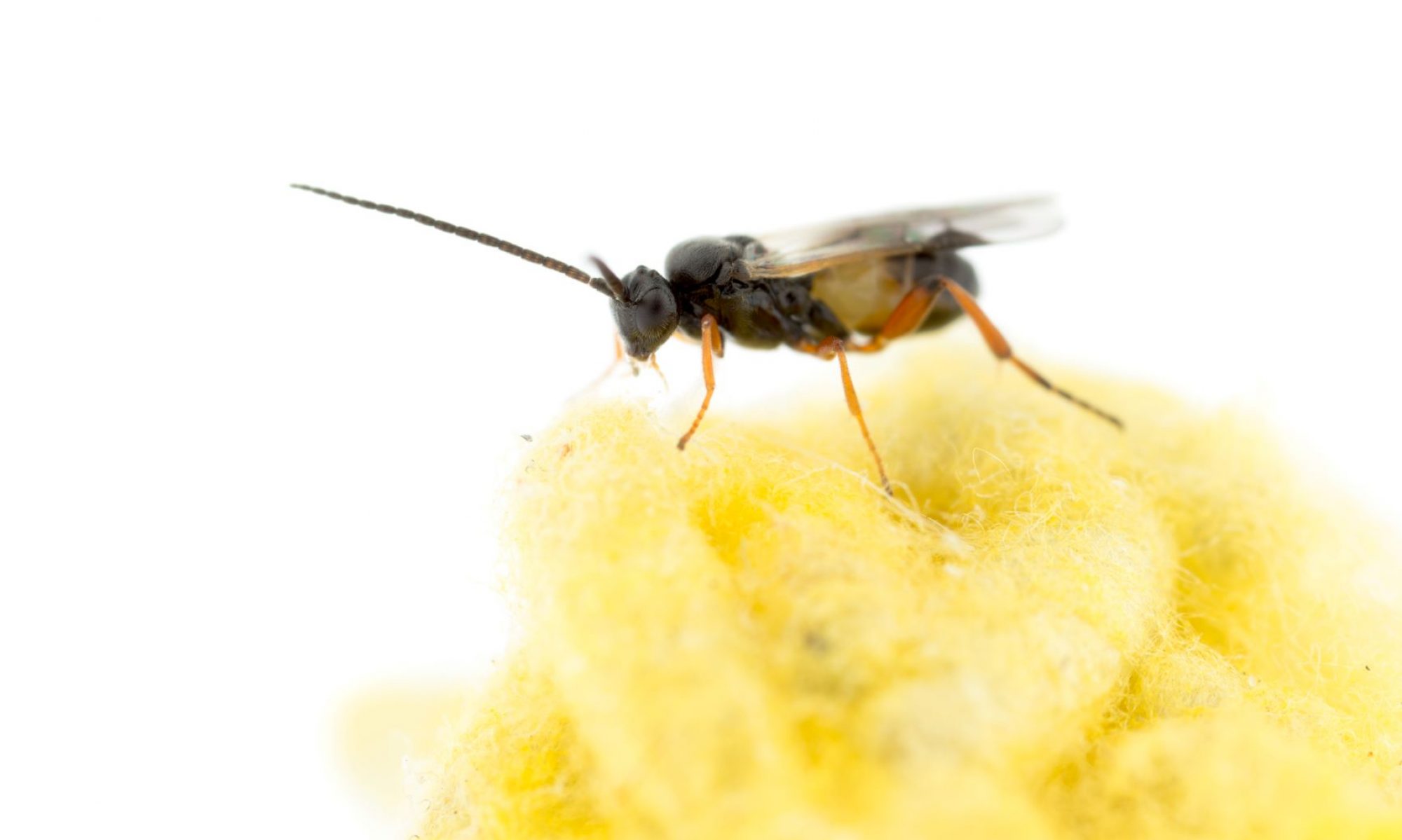Trap 2!
Hello again YETies and Waikerie students! I’ve just sorted the second trap – just to confuse things, I’ve done them in the reverse order, so this is the first trap that you collected, that started the day we set up the trap together.
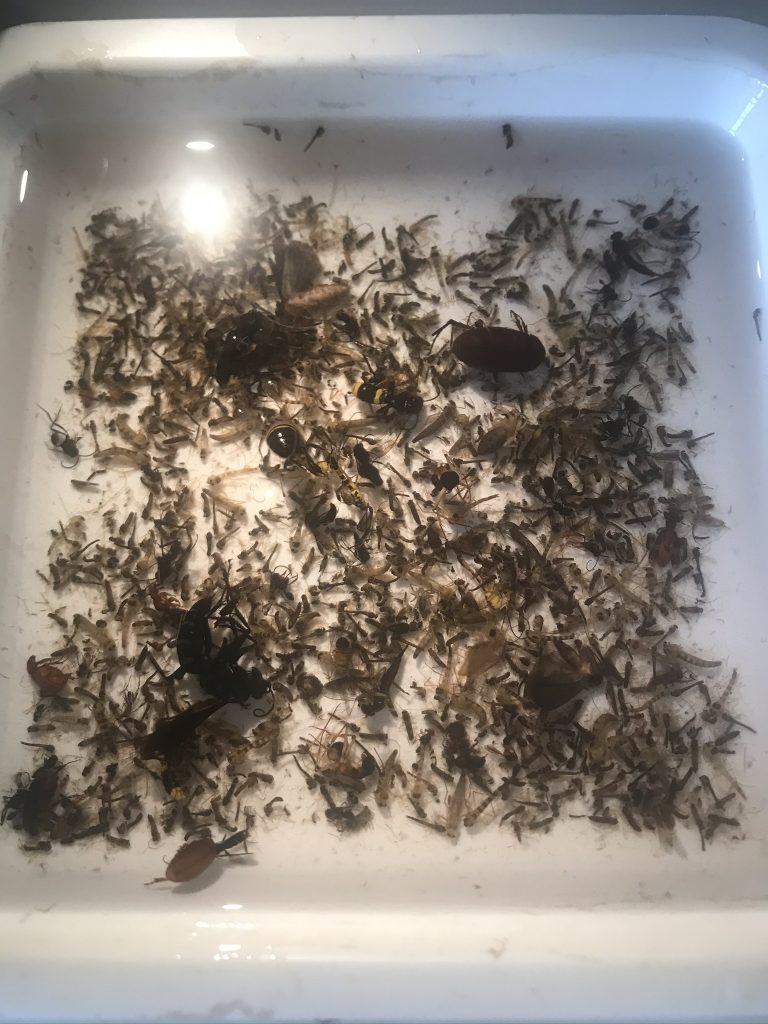
The second trap sample I sorted (which was actually the first that you collected, from the 18 February until the 4 March), had lots more wasps than the other trap. Still lots of flies though! But also some beetles, spiders, ants, moths and true bugs (Order Hemiptera).
Here’s a photo of all the wasps – unfortunately still none of the particular group I work on (Microgastrinae), but lots of pretty cool groups of wasps!
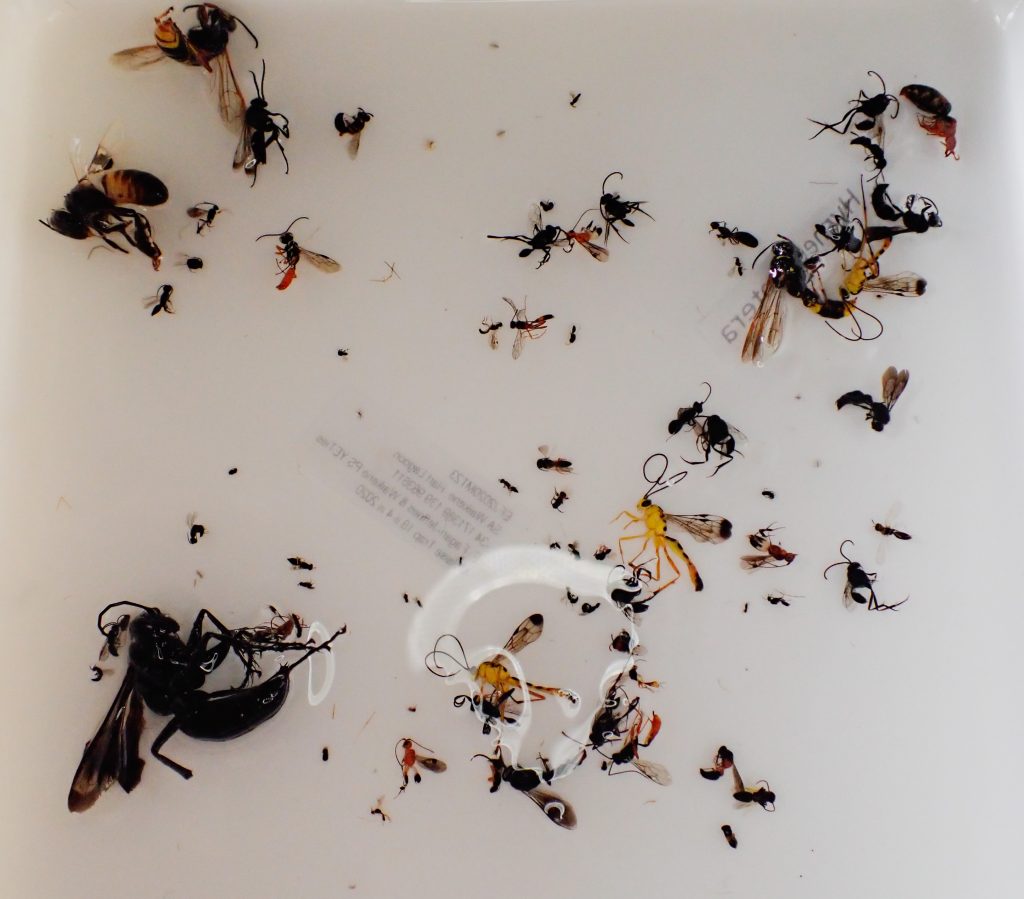
This is a wasp in the family Braconidae, subfamily Cheloninae – they are closely related to the group I work on, and are parasitoids of the eggs of moths – the wasps normally lay their eggs inside the eggs of moths, and the wasp larvae then eat the developing moth caterpillar.

This wasp bellow is in the family Ichneumonidae, genus Syzeuctus (thanks to my colleague Maddi Giannotta for the identification!).
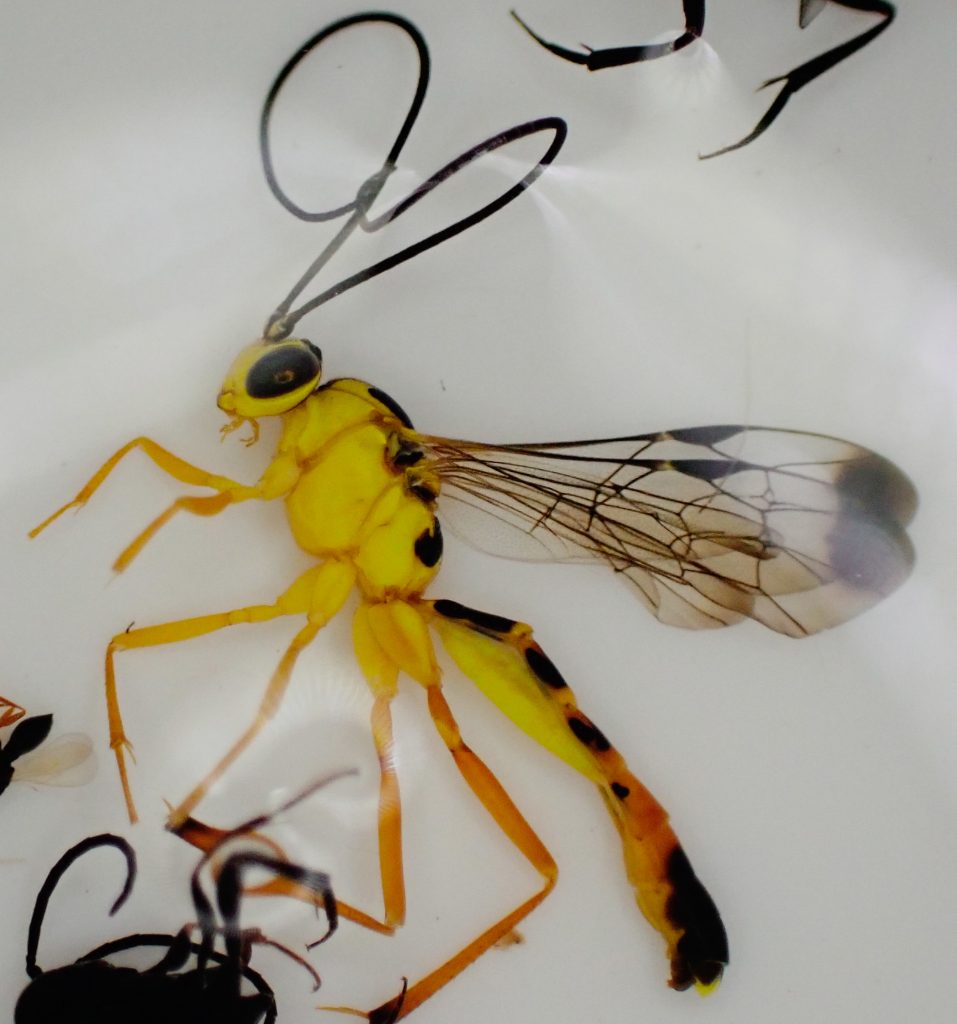
This one is a spider wasp – family Pompilidae! The female wasps dig burrows in the ground. They then find a spider, paralyse it by stinging it, then drag it into the burrow where they lay an egg… the baby wasp hatches out the egg and eats the fresh spider meat provided by it’s mum!
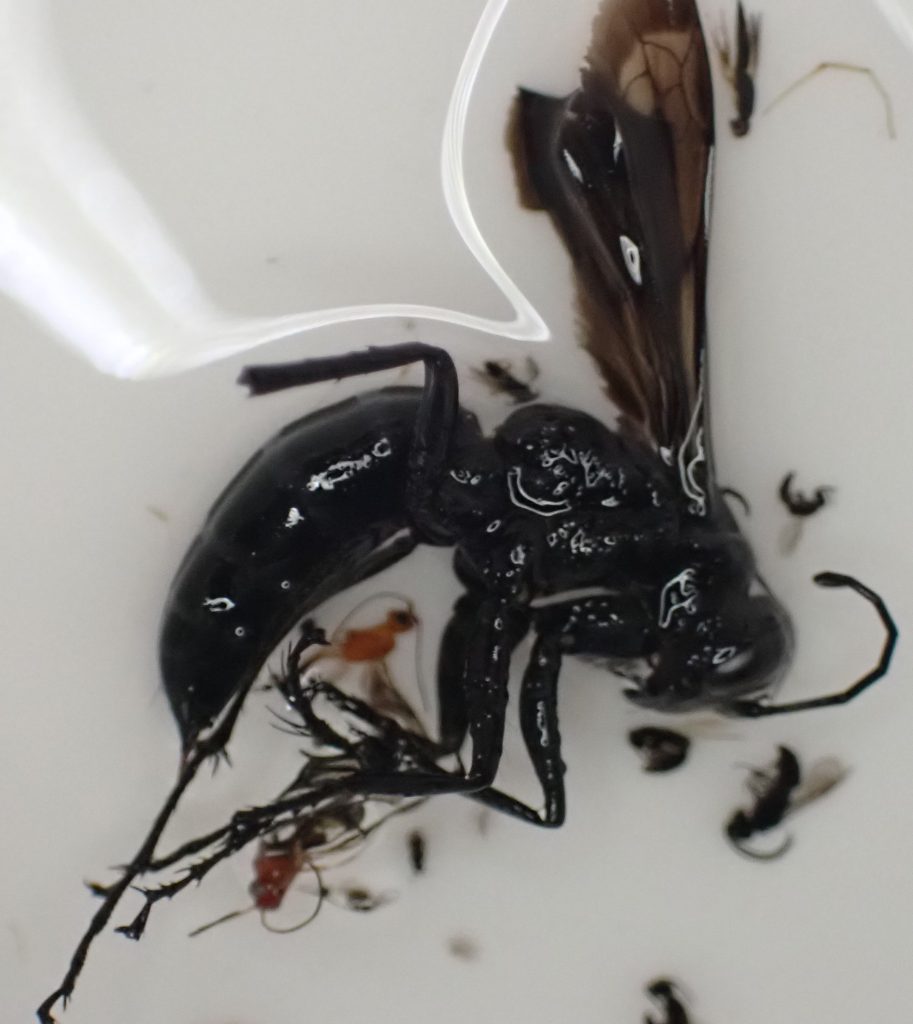
These final two are wasps in the family Thynnidae, which are often called flower wasps (as they are often seen visiting flowers to drink nectar). The females are wingless, and the males sometimes carry them around whilst they are flying, and even hold them near flowers so they can have a drink!

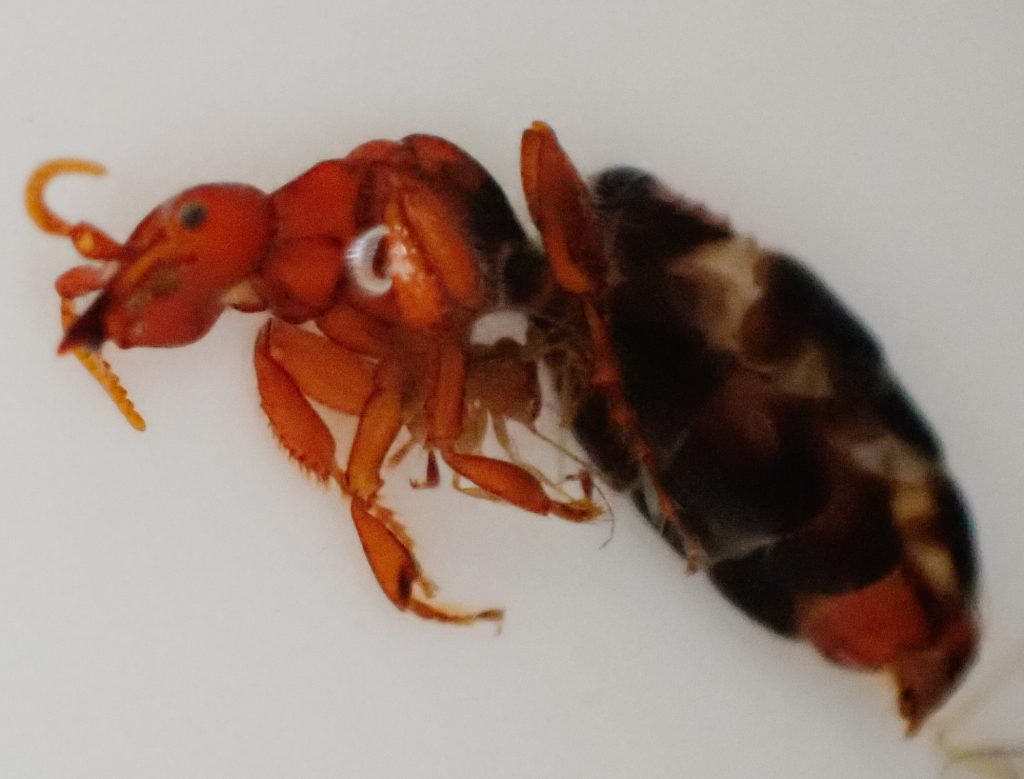
Thanks again for being part of the project – I look forward to seeing what the next traps have caught!
